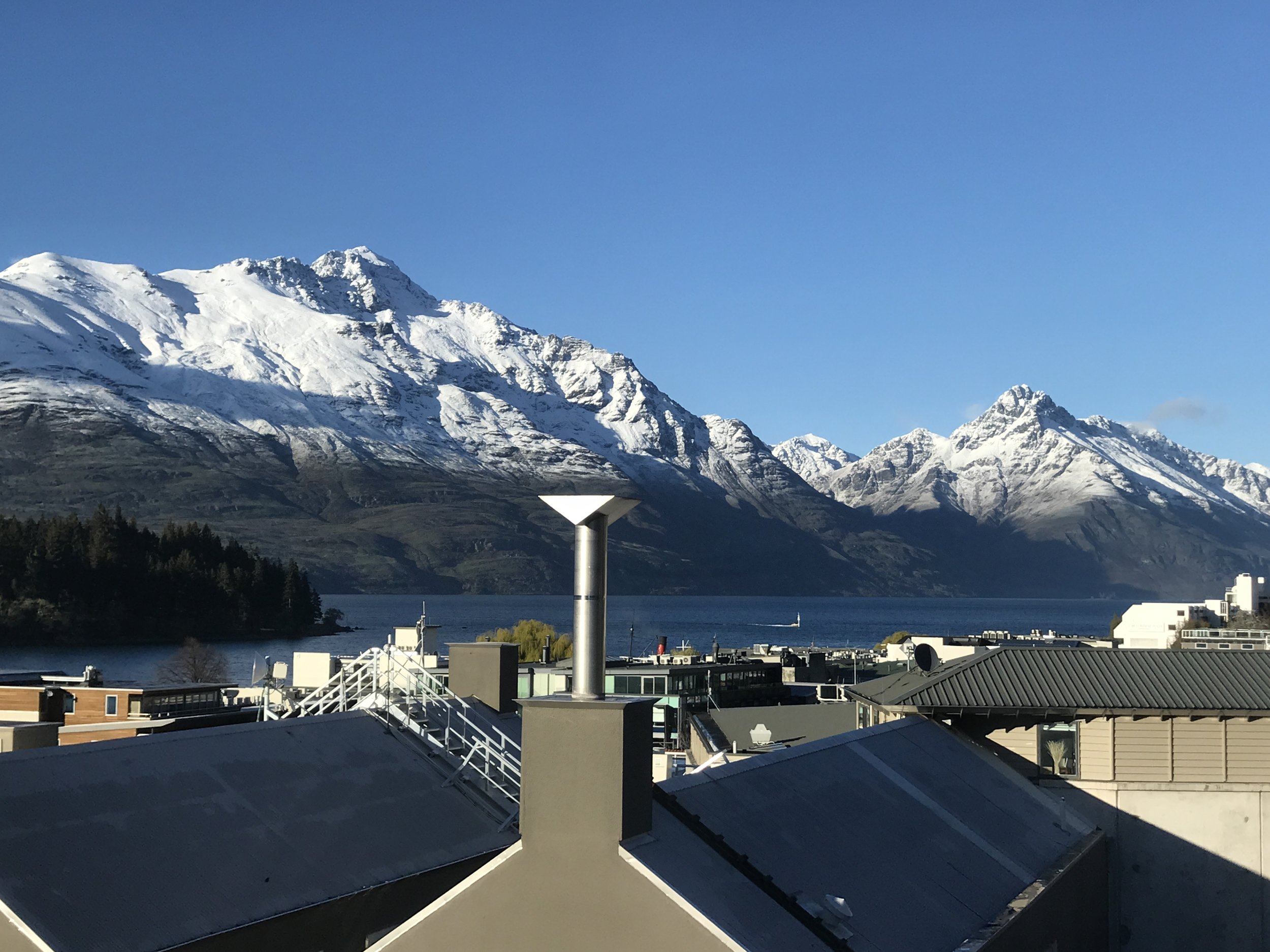Day 12: Queenstown to Aoraki/Mount Cook
I woke to fresh snow on the mountains on my last morning in Queenstown. Once last walk to the waters edge to take in the beauty, and then back “on the road again.”
I hopped on a new Stray Travel bus driven by Hunter, a kiwi from the North Island. It was a beautiful morning for the drive to Aoraki/Mount Cook, a drive that gives one a sense of the vastness and majesty of the Southern Alps. We drove along the electric glacier blue waters of Lake Pukaki towards Mt. Cook and straight into a valley in the heart of the Aoraki/Mt Cook National Park. Lake Pukaki is the largest of three lakes (others are Tekapo and Ohau) occupying ancient glacial valleys in the Mackenzie Basin. The lake’s distinctive deep blue tones are from finely ground minerals carried in the glacier-fed waters. Aoraki/Mount Cook, New Zealand’s highest mountain standing 3,754m/12,316 feet high, has a dual name reflecting New Zealand’s Maori and early European culture. Aoraki is the original Maori name which means ‘cloud piercer’. The English name honors the 18th century navigator, Captain James Cook, who first circumnavigated New Zealand and claimed the land for the English Crown.
This whole area is a part of a designated International Dark Sky Reserve (the largest reserve of its kind in the world) meaning the lack of light pollution offers you the opportunity to see the Milky Way, planets, and constellations with the naked eye at night. If you are lucky enough to have clear weather, I definitely recommend setting an alarm and getting up for the experience. I’ve just returned from a walk outside and the beauty is exceptional. That said, it’s almost a full moon on my night here and is, quite possibly, the brightest moon I’ve ever seen. The result being moon’s light is challenging the “dark sky” in a natural way.
The area was made a National Park in 1953, consisting of 140 peaks and 72 glaciers, which cover 40% of its land. Along with the Westland, Fiordland and Mount Aspiring National Parks, it makes up a UNESCO World Heritage Site called Te Wahipounamu. The Mt. Cook village has 250 permanent residents, with approximately 250,000 visitors each year. New Zealand mountaineer, Sir Edmund Hillary, trained on Aoraki Mt Cook for his successful May 1953 ascent of Everest. His life and achievements are celebrated at the Sir Edmund Hillary Alpine Centre, in Mt Cook Village.
Arriving here by 2pm... I was eager for the hike I’d heard so much about. By far the most popular track is the 4 hour return Hooker Valley Track that leads to a terminal glacier lake and offers some of those iconic Mt Cook views you see in all the photos.




























